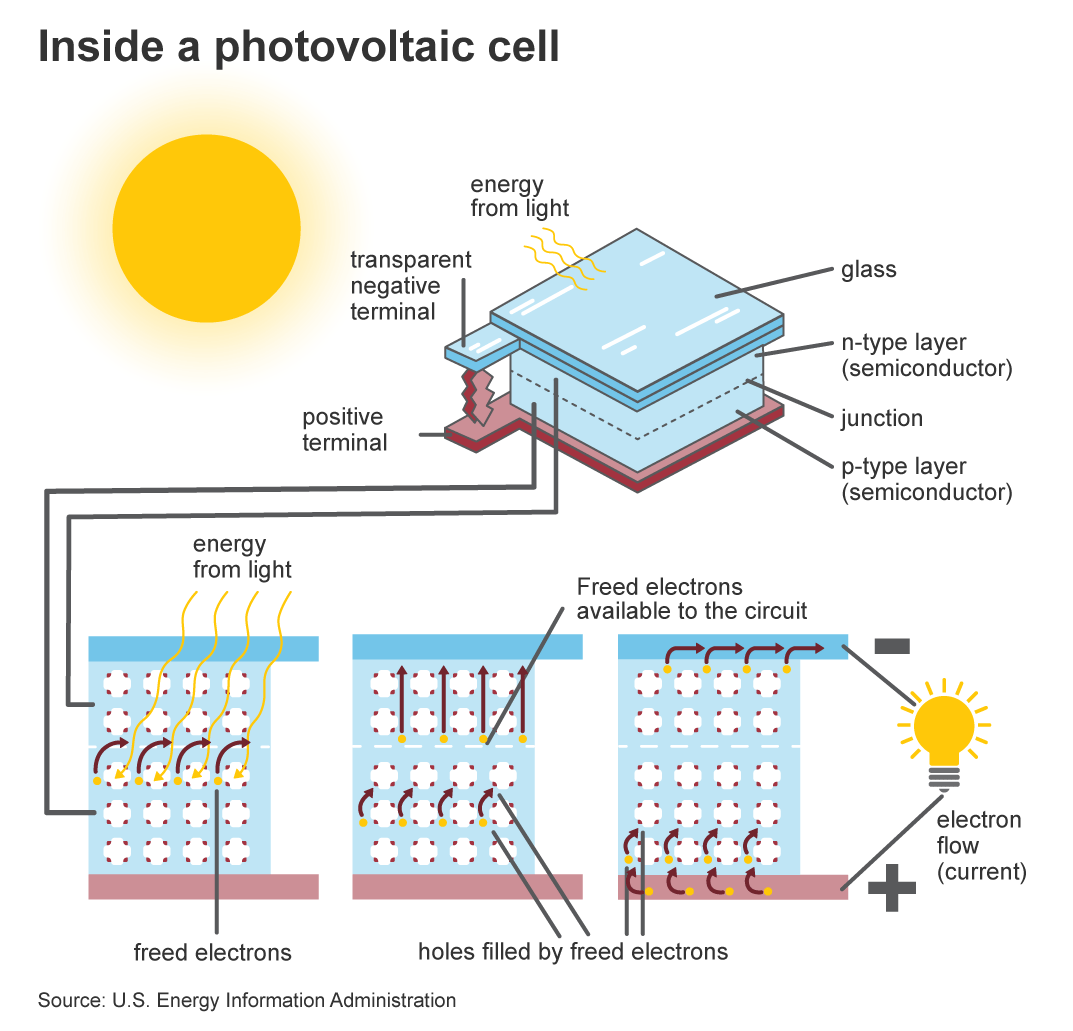
At the heart of solar energy technology lies the photovoltaic (PV) cell, a marvel of modern science that converts sunlight directly into electricity. But how exactly do these cells work, and what role do they play in the broader landscape of renewable energy? Let's uncover the answers in this enlightening blog post.
How Do Photovoltaic Cells Work?
At their core, photovoltaic cells operate on the principle of the photovoltaic effect, a phenomenon first discovered in 1839 by French physicist Alexandre-Edmond Becquerel. This effect involves the generation of an electric current when certain materials are exposed to light.
- Basic Principle: When photons, the particles of light, strike the surface of a photovoltaic cell, they transfer their energy to electrons within the material. This energy excites the electrons, allowing them to break free from their atomic bonds and create an electric current.
- Semiconductor Material: Most photovoltaic cells are made from semiconductor materials such as silicon. Silicon atoms are arranged in a crystalline structure, with each atom sharing electrons with its neighboring atoms. This creates a stable structure with a balance of positive and negative charges.
- Generation of Electric Field: By doping the silicon with impurities to create a p-n junction, an electric field is established within the cell. When sunlight strikes the cell, it knocks electrons loose from the atoms in the semiconductor material. The electric field then guides these electrons in a specific direction, creating a flow of electricity.

Main Types of Solar Cells
While silicon-based photovoltaic cells dominate the market, there are several other types of solar cells with unique properties and applications:
- Monocrystalline Silicon Cells: These cells are made from a single crystal of silicon, offering high efficiency and durability but at a higher cost.
- Polycrystalline Silicon Cells: Made from silicon crystals melted together, these cells are more affordable but slightly less efficient than monocrystalline cells.
- Thin-Film Solar Cells: Thin-film cells are made by depositing thin layers of photovoltaic material onto a substrate. They are lightweight, flexible, and can be produced using less material, but they generally have lower efficiency.
- Perovskite Solar Cells: Perovskite-based cells have garnered attention for their potential to achieve high efficiency at a lower cost. However, their stability and longevity remain areas of ongoing research.
Production of Solar Photovoltaic Cells
The production of solar photovoltaic cells involves several key steps:
- Material Preparation: Silicon wafers are produced by slicing ingots of purified silicon into thin discs. These wafers undergo surface treatment to optimize their light-absorbing properties.
- Cell Fabrication: Semiconductor processes are used to create the p-n junction within the silicon wafer. This typically involves doping the silicon with specific impurities and applying metallization layers to facilitate electron flow.
- Module Assembly: Individual solar cells are connected electrically and encapsulated within protective layers to form solar modules. These modules can vary in size and configuration to suit different applications.
What is a Photovoltaic System, and How Does It Work?
A photovoltaic system, often referred to as a solar PV system, comprises interconnected solar panels that generate electricity from sunlight. Here's how it works:
- Solar Panels: The solar panels, typically mounted on rooftops or in open spaces, absorb sunlight during the day.
- Inverter: The direct current (DC) electricity generated by the solar panels is converted into alternating current (AC) electricity by an inverter, making it compatible with the electrical grid and household appliances.
- Electricity Usage: The AC electricity produced by the photovoltaic system can be used to power electrical devices and appliances within the home or exported to the grid if it exceeds demand.
- Net Metering: In many regions, net metering allows homeowners with solar PV systems to receive credits for the excess electricity they generate, effectively reducing their electricity bills.
- Storage (Optional): Some photovoltaic systems incorporate battery storage to store excess electricity for use during periods of low sunlight or during power outages. A battery storage system is essential if you wish to keep your electricity on during an outage.
Photovoltaic cells represent a revolutionary technology that enables the direct conversion of sunlight into electricity, offering a clean, renewable energy source with vast potential. As advancements in materials science and manufacturing techniques continue to drive down costs and improve efficiency, solar photovoltaic systems are poised to play an increasingly significant role in our transition towards a sustainable energy future. Understanding the inner workings of photovoltaic cells not only fosters appreciation for their ingenuity but also empowers individuals and communities to embrace solar energy as a viable solution to our energy needs.






